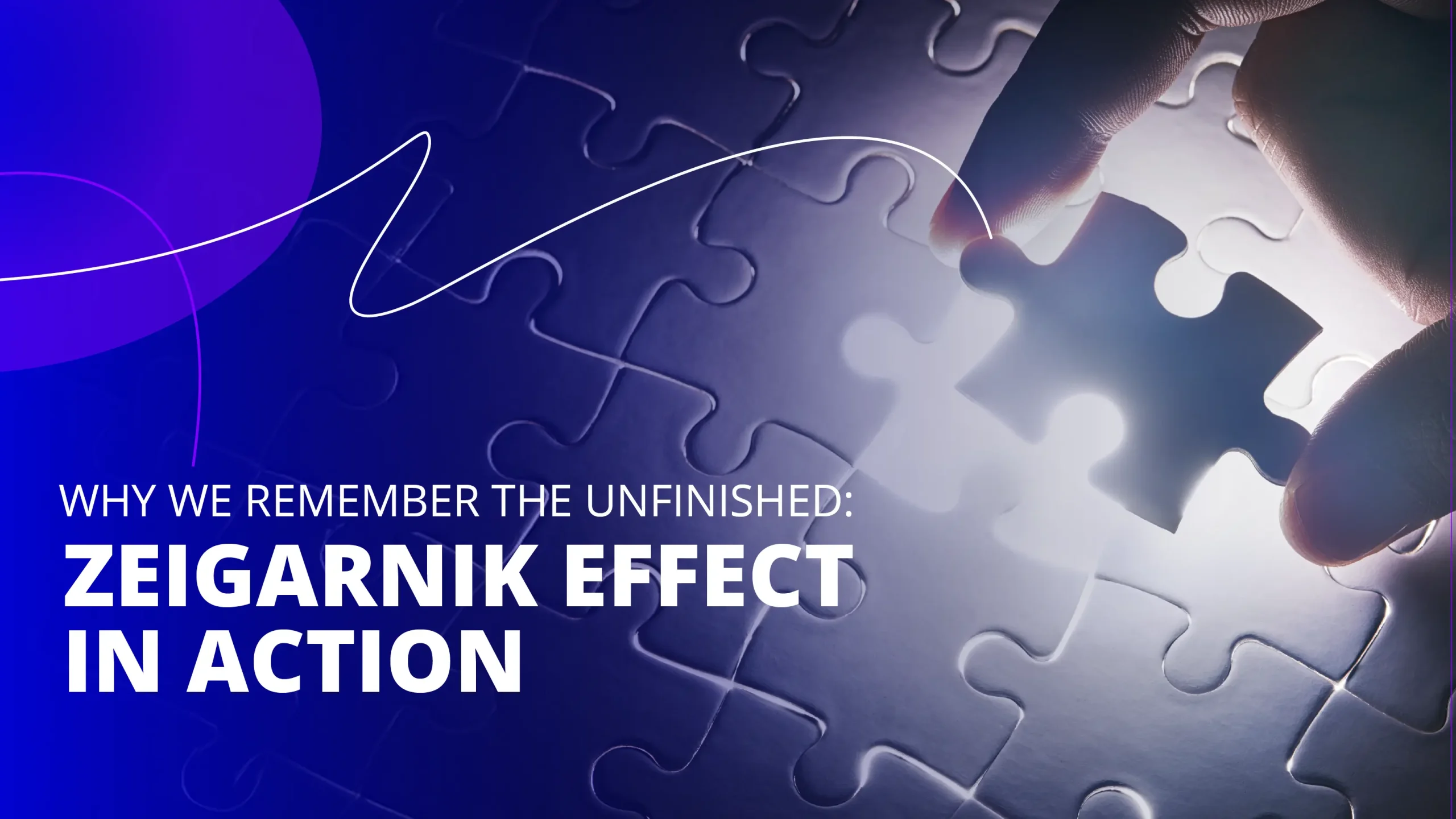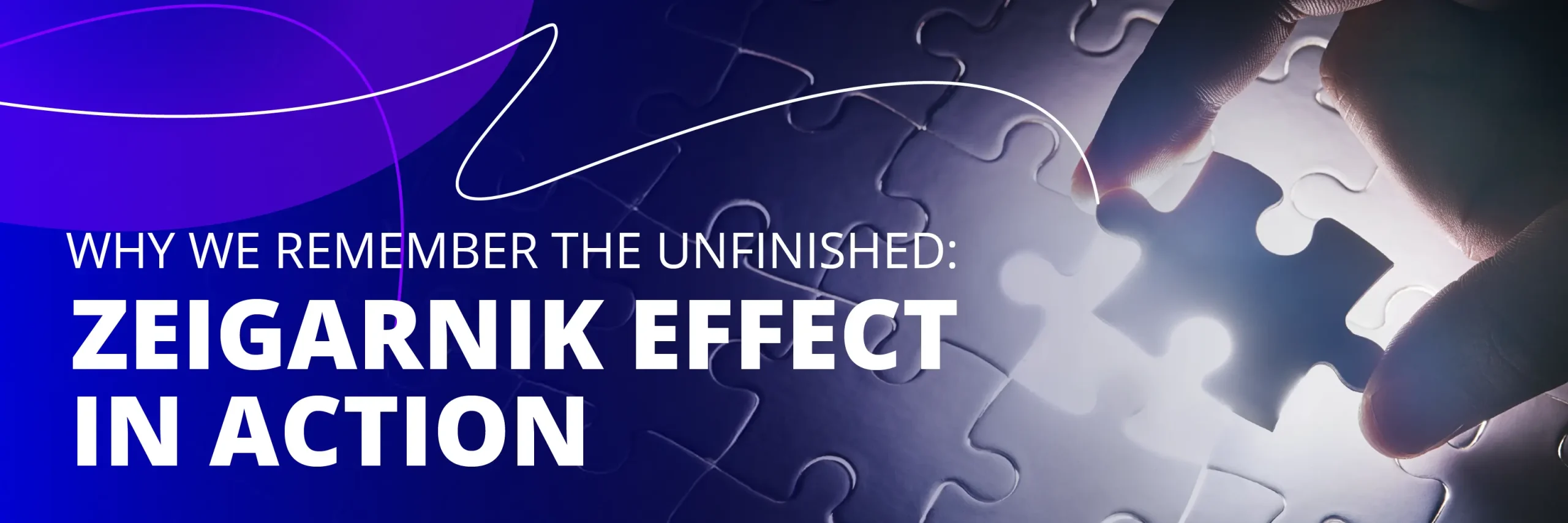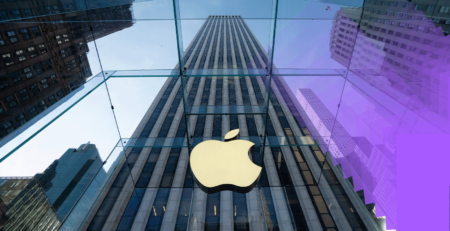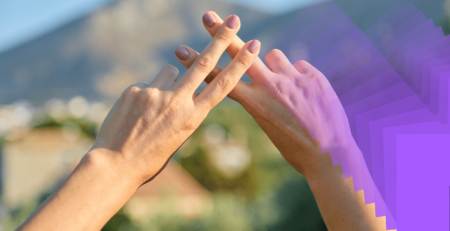The Unfinished Narrative: How Nike, Coca-Cola, and Apple Master the Zeigarnik Effect to Build Lasting Brand Intrigue
Your brand invests millions in creating memorable content, yet your campaigns fade from memory moments after consumers scroll past them. Meanwhile, your competitors command attention effortlessly, their audiences eagerly awaiting every product launch and campaign reveal. The difference isn’t advertising budget, it’s understanding a nearly century-old psychological principle that transforms passive viewers into active participants.
This principle creates an itch in the consumer’s mind that demands scratching. It turns marketing from a one-way broadcast into an interactive journey where your audience feels compelled to seek out your brand. The most successful companies in the world have mastered this approach, building empires on the foundation of strategic incompleteness.
At Trace Brand Building, we’ve decoded how Nike, Coca-Cola, and Apple leverage the Zeigarnik Effect to create sustained consumer engagement. This analysis reveals not just what makes these brands magnetic, but provides a strategic framework you can implement to transform your own brand from overlooked to unmissable.
What Is the Zeigarnik Effect?
The Zeigarnik Effect demonstrates that our brains hold onto unfinished tasks with remarkable persistence, remembering incomplete activities up to 90% better than completed ones. This psychological phenomenon transforms marketing from passive consumption into active participation, creating a cognitive tension that compels consumers to seek resolution.
The Vienna Café Discovery
The discovery emerged from an unexpected observation in a 1920s Vienna café. Lithuanian-Soviet psychologist Bluma Zeigarnik, studying under renowned Gestalt psychologist Kurt Lewin, noticed something peculiar about the serving staff. Waiters could recall complex, multi-item orders for tables with unpaid bills with remarkable accuracy. Yet the moment payment was settled, those same order details vanished from memory.
Intrigued, Zeigarnik designed controlled experiments to test this phenomenon. She gave participants 15 to 22 simple tasks; solving puzzles, stringing beads, folding paper, but interrupted approximately half before completion. When later asked to recall their activities, participants consistently remembered the interrupted tasks up to 90% better than completed ones. Published in her 1927 paper “On Finished and Unfinished Tasks,” these findings gave scientific backing to what marketers now recognize as one of their most powerful tools.
This effect connects directly to Gestalt psychology’s “law of closure,” our brain’s automatic tendency to fill gaps and create coherent wholes from incomplete patterns. An unfinished task becomes an incomplete cognitive pattern, and our minds hold onto it, seeking the missing pieces required for closure.
How Cognitive Tension Drives Action
What drives the Zeigarnik Effect’s power in marketing? The answer lies in cognitive tension, a state of psychological unease that persists until it is resolved. When consumers begin but don’t complete an interaction with your brand, they establish goal-specific tension that demands mental energy. If the interaction is completed, tension is released. If interrupted, it persists as an active “open loop” in working memory.
This isn’t passive memory enhancement; it’s an active motivational state. Our minds, seeking cognitive economy and equilibrium, prioritize resolving these open loops to reduce mental load. This creates a powerful internal drive to return to the unfinished task, transforming marketing from monologue to dialogue. The brand initiates a process that the consumer feels innately compelled to finish.
Research reveals nuanced limitations. Simply making a plan can dissipate cognitive tension; if consumers can easily schedule completion for later, motivational power diminishes. Individual personality traits matter too. Those with high ambition or who tie incomplete tasks to personal success feel the effect most strongly. Tasks interrupted mid-way or near completion generate stronger recall than those interrupted early, reflecting greater cognitive investment.
The Modern Marketing Toolkit
Today’s marketers have applied Zeigarnik principles to develop sophisticated engagement strategies. Digital platforms now enable personalized, interactive open loops where “unfinished tasks” are directly tied to user actions and goals, making cognitive tension far more potent than that of broadcast-era marketing.
Narrative Suspense and Cliffhangers
The most direct application appears in narrative suspense through cliffhangers, the cornerstone of serialized entertainment and teaser campaigns. By presenting incomplete stories or problems without resolution, brands generate powerful curiosity and cognitive need for missing information.
This creates an “information gap” that transforms brands into sole purveyors of resolution. When campaigns hint at new products without full reveal or tell stories in installments, unresolved tension keeps the narrative—and brand—top-of-mind. Audiences don’t just watch; they actively seek the next installment to achieve closure.
Gamification and Progress Indicators
Digital marketing leverages the Zeigarnik Effect most powerfully through gamification, particularly progress indicators. When users encounter “Your profile is 40% complete,” a clear, quantifiable open loop emerges. This visual representation of incompleteness becomes a potent motivator.
This approach capitalizes on multiple psychological principles simultaneously:
- Direct Zeigarnik activation through salient task incompleteness
- Endowed progress effect where artificial head starts increase completion likelihood
- Goal-gradient hypothesis where effort accelerates approaching completion
These visual cues make completion paths tangible and manageable, transforming tedious processes into motivating journeys. Breaking large tasks into visible steps maintains engagement and significantly increases completion rates for profiles, courses, and multi-step forms.
Triggering Action Through Incomplete Transactions
Abandoned shopping cart reminders exemplify the Zeigarnik Effect, driving immediate conversions. When consumers add items to carts, they initiate purchasing processes, creating personal open loops. Follow-up messages stating “You left something behind” reactivate cognitive tension, nudging toward completion.
This strategy’s effectiveness stems from initial commitment principles. Starting tasks by clicking buttons, adding items requires minimal effort. Once taken, these micro-commitments create psychological momentum, encouraging follow-through. Limited-time offers and countdown timers add urgency layers to pre-existing tension, compelling resolution before opportunities vanish.
Nike’s Perpetual Achievement Engine
Nike transcends traditional marketing by embedding Zeigarnik principles into the brand experience fabric. The company reframes consumer engagement as perpetual, unfinished self-improvement journeys, turning products and platforms into motivation engines. For Nike, “unfinished tasks” aren’t just advertising hooks; they’re core product features.
Sequential Storytelling in Campaigns
Nike’s advertising rarely focuses on shoe specifications. Instead, it tells human endeavor stories, serialized narratives unfolding over time. Multi-part campaigns follow the athlete’s journey, segmented into distinct chapters released in installments. Each segment reveals enough to engage and advance the plot while leaving outcomes unresolved until the final pieces are revealed.
This sequential approach creates sustained open loops. Consumers follow narratives, as they are psychologically invested in the resolution. The strategy encourages social media following, channel subscription, and active searching for next installments. Nike forges emotional connections beyond single products; consumers join journeys where brand products become tools facilitating completion.
The Nike+ App Ecosystem
Nike Run Club (NRC) and Nike Training Club (NTC) apps represent profound Zeigarnik applications, perpetual motion machines that transform unfinished tasks into fitness from chore to addictive goal pursuit. These platforms engineer environments, creating and managing cognitive tension through:
Constant Incomplete Challenges: Timed challenges, personal goals, and community competitions create continuous open-loop cycles. Each completed challenge leads seamlessly to more ambitious ones, keeping journeys perpetually “unfinished.”
Visualized Progress and Social Competition: Progress bars, achievement badges, and leaderboards make journeys tangible. Leaderboards externalize internal tension, and completing runs amplifies through social motivation to outperform friends. Unfinished tasks become public performances, strengthening closure drive. We applied this exact principle in our Pizza Party Revival campaign for Dr. Oetker, where a digital game with leaderboards and prizes for the top three performers kept participants engaged throughout the back-to-school season, driving a 60% sales increase by transforming product purchases into competitive achievements.
Adaptive Personalization: Personalized coaching plans adjust based on progress, maintaining optimal difficulty “sweet spots” challenging enough for motivation without causing discouragement. Dynamic adaptation maintains optimal cognitive tension levels.
Through this ecosystem, Nike integrates into user lifestyles and identities. App motivation equals loop-closing motivation, deepening Nike relationships while gathering invaluable personalization data.
The Culture of the Drop
Nike’s mastery of anticipation appears in limited-edition sneaker “drops” through the SNKRS app. This strategy transforms product launches into highly anticipated cultural events using Zeigarnik Effect to build fevered desire.
The orchestrated sequence creates and sustains open loops:
- Begins weeks/months before with teasers and cryptic announcements
- SNKRS app features “Coming Soon” tags, officially starting countdowns
- Limited availability amplifies tension through scarcity
- Launch day becomes a resolution moment for thousands simultaneously
For successful purchasers, accomplishment follows. For others, unresolved tension fuels greater desire for next drops. The SNKRS Reserve system evolution offers transparent closure paths, building trust with core audiences.
Coca-Cola’s Social Connection Strategy
While Nike’s Zeigarnik application appears overt in digital products, Coca-Cola’s approach proves subtle, social, and emotionally rooted. The brand excels at creating open loops that foster social connection and shared experiences. Coca-Cola’s genius lies in creating unfinished task frameworks, then empowering consumers to activate and resolve them for each other.
Share a Coke Campaign Analysis
What made Share a Coke one of history’s most successful Zeigarnik implementations? The 2011 campaign’s simple premise, replacing logos with 250 common first names, transformed ubiquitous products into personalized artifacts and massive, decentralized treasure hunts.
The campaign created two interlocking “unfinished tasks”:^29^
Personal Quest: An individual’s search for bottles bearing their name, creating personal open loops. Every store trip became a potential resolution moment, fostering personal recognition and ownership.
Social Task: Searching for bottles with names of friends and loved ones proved the campaign’s masterstroke. It outsourced millions of open-loop creations to consumers themselves. Cognitive tension is generated not through advertising but through thoughts like “I need to find a Coke for Sarah.”
This social dynamic drove sales and unprecedented user-generated content. Finding and giving personalized bottles became a task resolution and social performance. Consumers shared discoveries on social media using #ShareaCoke, amplifying reach and creating community. Results proved staggering: 11% sales increases among U.S. teens who previously viewed the brand as “trusty but dusty.“
Emotional Resonance Through Storytelling
Beyond specific campaigns, Coca-Cola cultivates abstract yet powerful open loops through story-driven advertising. Iconic commercials don’t end on plot cliffhangers; they create lingering, unresolved emotional resonance, keeping brands salient and positively framed.
Consider the 1971 “Hilltop” commercial featuring global choruses singing “I’d Like to Buy the World a Coke.” The ad tells complete unity stories while evoking powerful, universal harmony longings persists after viewing. Similarly, 1979’s “Hey Kid, Catch!” featuring “Mean” Joe Greene sharing Coke with young fans creates heartwarming connection moments resonating emotionally.
This “soft” Zeigarnik application creates gaps between idealized emotions portrayed (perfect harmony, pure kindness, universal happiness) and viewers’ lived experiences. Coca-Cola positions itself as a trigger for sought-after feelings. Consistent messaging around togetherness, happiness, and optimism creates persistent emotional associations. Consuming Coca-Cola momentarily “closes loops” on desires for simple, positive emotional experiences.
Apple’s Manufactured Suspense Mastery
If Nike integrates Zeigarnik Effects into products and Coca-Cola embeds them in social connections, Apple elevates principles to corporate philosophy levels. The company’s entire marketing strategy orchestrates globally scaled exercises, creating and resolving cognitive tension. Apple doesn’t simply use Zeigarnik Effects tactically; it institutionalizes them. The brand’s primary marketing products aren’t iPhones themselves but palpable anticipation preceding launches.
The Cult of Secrecy
Apple’s pre-launch playbook represents the most disciplined, effective Zeigarnik applications in modern business. The company operates under legendary secrecy veils, creating massive information vacuums that consumers, media, and analysts desperately need filling. This isn’t passive quiet; it’s active information control strategies generating maximum psychological tension.
The ritualized, predictable process remains novel in details:
Controlled Information Release: Apple maintains absolute narrative control. Product details remain guarded until precise keynote reveal moments. Information scarcity turns minor data points—patents, supply chain rumors, software betas—into major news, fueling months of speculation.
Cryptic Invitations: Approximately 7-10 days before launch events, Apple issues characteristically cryptic media invitations. These minimalist ambiguity masterpieces feature simple graphics and vague taglines like “Awe Dropping.” Single acts serve as official starting pistols, creating well-defined open loops. Global tech communities immediately decipher clues, generating millions in free coverage while amplifying anticipation globally.
Strategic Leaks: While maintaining ironclad secrecy reputations, Apple uses controlled leaks to trusted journalists, building hype and shaping narratives. Leaks provide enough information to tantalize further speculation without fully resolving mysteries, perfectly managing cognitive tension at optimal levels.
Launch events become theatrical resolution performances. Keynotes structure tension resolution in stages, saving the biggest reveals for last. The famous “one more thing…” moment creates and immediately resolves final, powerful open loops, leaving audiences with heightened satisfaction.
The Never-Ending Ecosystem
Apple’s Zeigarnik mastery extends beyond launch cycles into product strategy design. The company creates seamlessly integrated hardware, software, and services ecosystems, fostering perpetual consumer “incompleteness.”
This strategy creates compounding psychological pull. One Apple product purchase simultaneously closes loops (satisfying device desires) while creating new ones. iPhone owners constantly encounter features like Handoff and AirDrop working more effectively with Macs or Apple Watches. Existing setups, once feeling complete, now feel unfinished. “Sets” are never truly complete because Apple constantly introduces new products promising even more integrated experiences.
This dynamic extends socially. The infamous “green bubble” versus “blue bubble” iMessage distinction powerfully demonstrates social tension. For Android users in iMessage groups, green bubbles constantly mark “incompleteness” within social-technological ecosystems. This creates peer pressure and conformity desires only be resolved through iPhone purchases, closing social-technological loops.
Strategic Framework for Implementation
At Trace Brand Building, we’ve synthesized these case studies into actionable frameworks for creating brand intrigue. Success requires understanding both psychological power and ethical application boundaries.
Key Strategic Approaches Comparison
| Brand | Core Application | Key Tactics | Psychological Outcome |
|---|---|---|---|
| Nike | Process & Goal Gamification | App challenges, leaderboards, sequential storytelling, product drops | Motivation, Goal Pursuit, Community Competition |
| Coca-Cola | Social Connection & Search | Personalized packaging, user-generated content, emotional advertising | Belonging, Personal Recognition, Nostalgia |
| Apple | Information Scarcity & Ecosystem | Secrecy, cryptic invitations, controlled leaks, integrated products | Anticipation, Exclusivity, Desire for Completion |
Ethical Considerations
Applying psychological principles in marketing carries significant responsibilities. The line between engaging intrigue and manipulative anxiety remains thin—crossing it causes irreparable brand damage.
The Cardinal Rule: Resolution must justify the wait. Creating suspense only to deliver disappointing payoffs alienates audiences fastest. Satisfaction must match the tension created.
Influence vs. Manipulation: Create genuine anticipation and motivation, not exploit vulnerabilities. Transparency and user agency respect remain paramount. Consumers should never feel trapped—clear exit options must always exist. The objective empowers consumers to make informed decisions, not to be coerced.
Avoiding Fatigue: Overusing cliffhanger tactics leads to burnout. Constant open loops without resolution become irritating and predictable. Balance keeps consumer experiences delightfully curious rather than perpetually frustrated.
Four-Step Implementation Process
Our framework for developing campaigns leveraging Zeigarnik Effects effectively:
Step 1: Identify Completion Opportunities
Audit entire customer journeys from awareness through loyalty. Identify natural interruption points, progress stages, or narrative segmentation moments—fertile grounds for open loops.
Step 2: Design the Open Loop
Based on opportunities and brand strategy, design specific “unfinished tasks.” Create strategic information gaps, narrative hooks, gamified challenges, or multi-part sequences. Keep initial commitments small and low-friction, maximizing process initiation likelihood.
Step 3: Engineer the Payoff
Pay meticulous attention to resolution. Design “payoffs” genuinely valuable and satisfying. Provide closure while reinforcing brand promises and leaving positive emotional experiences.
Step 4: Implement and Test
Launch initiatives using data to measure effectiveness. Track engagement rates, completion rates, and consumer sentiment. Optimize tension and reward balance, keeping strategies compelling without causing frustration.
Sector-Specific Applications
The Zeigarnik Effect adapts across industries. Our tailored recommendations for key sectors:
CPG/Food Brands: Move beyond advertising cliffhangers. Create collectible campaigns motivating set completion (packaging designs, toys, flavors). Serialize digital content like a multi-part cooking series featuring products. Interactive quizzes about ingredients or brand history drive interaction and data capture.
Healthcare: Apply ethically for patient adherence and wellness. Patient apps use progress bars tracking medication schedules, therapy exercises, or wellness goals, providing accomplishment and motivation. Public health campaigns use multi-part educational content, disseminating complex information in digestible segments.
B2B Brands: Ideal for lead nurturing and thought leadership. Drip campaigns revealing industry reports piece by piece keep prospects engaged. Multi-part webinar series ending with cliffhanger questions boosts attendance. Interactive ROI calculators providing preliminary results requiring consultation for full analysis generate leads effectively.
Transform Your Brand From Overlooked to Unmissable
The Zeigarnik Effect, born from simple 1920s café observations, proves remarkably durable and potent. Its power aligns with fundamental human cognition—our innate closure drive. Nike, Coca-Cola, and Apple demonstrate how sophisticated brands move beyond tactical use, integrating principles into core strategies for product design, community building, and brand identity.
Looking forward, AI evolution enables hyper-personalized open loops at unprecedented scales. Instead of one-size-fits-all progress bars, AI dynamically tailors unfinished tasks to individual behaviors and goals, dramatically increasing personal relevance and closure motivation.
Interactive and immersive media growth, including augmented reality and branching-narrative video, allows consumers becoming co-authors of brand stories. User choices create unique unresolved paths, fostering deeper personal investment in narrative outcomes. “Unfinished tasks” become self-created, intensifying completion desire.
The brands succeeding will understand how to ethically open loops, create motivating tension, and deliver satisfying resolutions. At Trace Brand Building, we transform this understanding into measurable results. Our MAGIC formula doesn’t just apply these principles—it customizes them to your unique brand narrative and market position.
Ready to create a brand that commands attention rather than competes for it? We deliver a verified 10% sales lift within 90 days of implementation on the same ad budget. Our last five builds achieved a 34% median lift. If growth has stalled despite increased spending, the problem isn’t media—it’s message and positioning.
Book your MAGIC Audit today or schedule a 20-minute eligibility check. Discover how strategic incompleteness can complete your brand’s transformation.













Leave a Reply